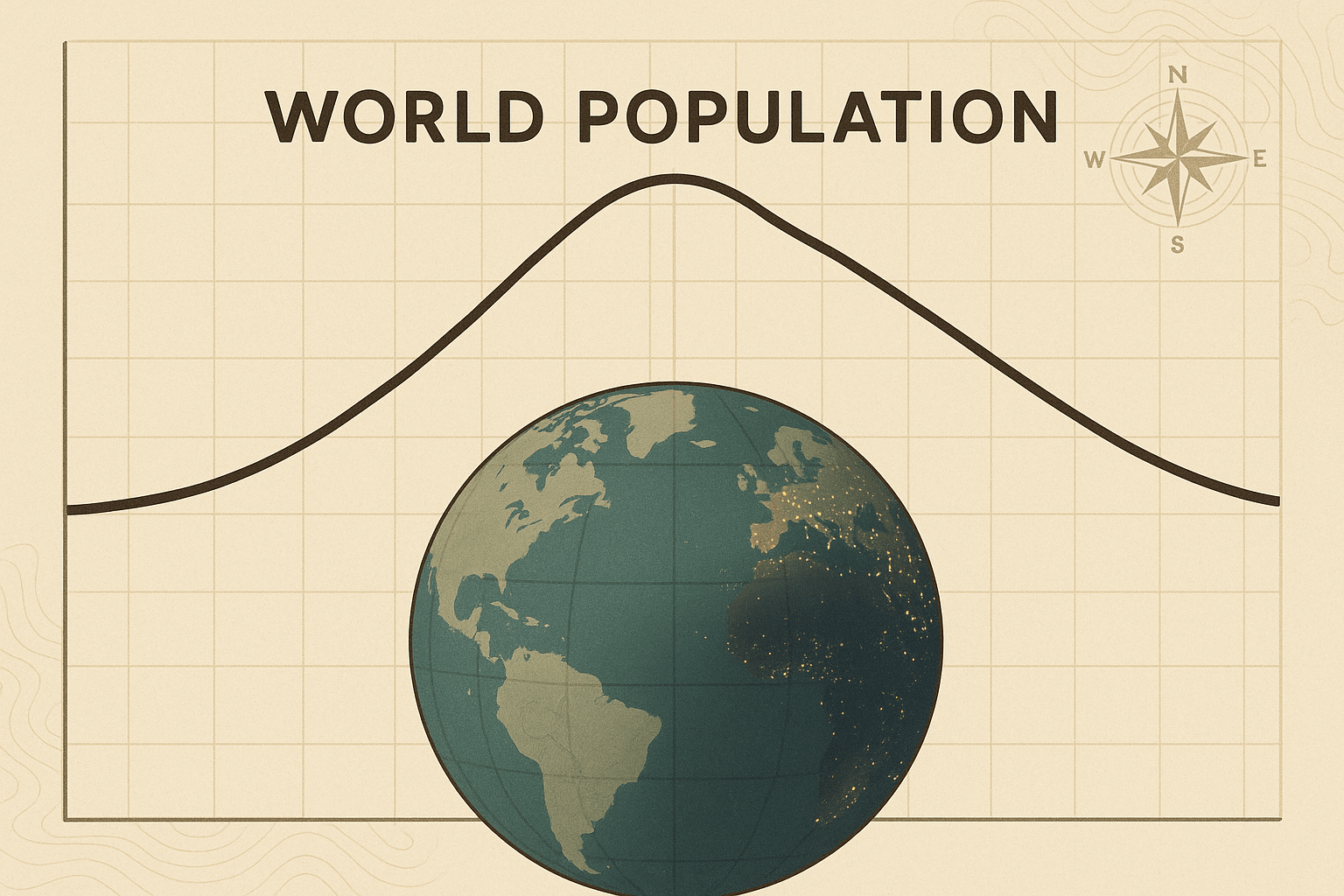This isn’t a far-off hypothetical; it’s a future shaped by decisions being made today in households from Tokyo to Turin. The global fertility rate has halved since 1950. Dozens of countries are already shrinking. But this great reversal won’t happen everywhere at once. Its arrival is a story of geography—a tale of deep divergence that will reshape our world map.
The Great Divergence: A Planet of Peaks and Valleys
The engine of population change is the fertility rate—the average number of children born per woman. To maintain a stable population, that number needs to be around 2.1 (the “replacement rate”). Today, over half the world’s population lives in a country below this level. This has created a stark geographical divide between the regions entering a “demographic winter” and those still experiencing a “demographic summer.”
The Vanguards of Decline: East Asia and Europe
The first continents to experience widespread population decline are, and will continue to be, Asia and Europe. Their journey into negative growth offers a glimpse into the future.
- Japan: The Poster Child for Shrinkage. Japan’s population peaked in 2008 and has been falling ever since. Geographically, this isn’t a uniform emptying. Tokyo remains a hyper-dense, thriving megacity, but venture into rural prefectures and you’ll find a different world. Thousands of villages are disappearing, their schools shuttered and fields slowly reclaimed by nature. This is creating a landscape of extreme concentration in a few urban cores and vast, aging, and emptying countrysides.
- South Korea: The Demographic Cliff Edge. South Korea holds the unenviable title of the world’s lowest fertility rate, currently below 0.8. The intense pressures of its urban, hyper-competitive economy have made child-rearing prohibitively expensive for many. The capital, Seoul, is a perfect example of this paradox: one of the most dynamic and crowded cities on Earth, yet one that is failing to reproduce itself.
- Europe: An East-West Story. In Europe, the pattern is more complex. Eastern European nations like Bulgaria, Latvia, and Ukraine are shrinking fastest, a double-whammy of low birth rates and high emigration as young people seek opportunities in the West. In Southern Europe, countries like Italy and Spain face a similar fate, with entire “ghost villages” in regions like rural Galicia or Basilicata now being sold for €1 to attract new residents. This is a direct geographical consequence of economic stagnation and aging.
The Last Bastions of Growth: Sub-Saharan Africa
While Europe and East Asia shrink, the world’s demographic center of gravity is shifting decisively south. The engine of global population growth for the rest of the century will be Sub-Saharan Africa.
Countries like Nigeria, the Democratic Republic of Congo, and Ethiopia have youthful populations and fertility rates that, while falling, remain well above replacement level. This doesn’t mean a Malthusian crisis, but it does mean extraordinary geographic change.
The most visible manifestation of this is explosive urbanization. Cities like Lagos, Kinshasa, and Dar es Salaam are set to become some of the largest megacities on the planet by 2050. Their challenge is the opposite of Japan’s: not managing decline, but building infrastructure—housing, transport, sanitation—fast enough to keep up with the human tide. The future of human urbanism is being written in these sprawling, dynamic, and often chaotic African cities.
What a “Degrowth” World Looks Like on a Map
As these two realities play out, the very texture of our planet’s human geography will change. What will this new world look like spatially?
The Emptying Countryside and the Resilient City
The most profound spatial signature of depopulation is the hollowing out of rural and remote areas. As populations shrink and age, people will continue to consolidate in major urban centers where economic opportunities and services remain. This will accelerate the urban-rural divide into a chasm.
This has a fascinating physical geography dimension. In depopulating regions, marginal farmland may be abandoned. As fields lie fallow, forests will return. This process of “rewilding” is already visible in parts of Europe, where wolves and bears are reappearing in landscapes they haven’t inhabited for centuries. We may be heading for a future where our planet is simultaneously more urbanized and more wild than it has been in a thousand years.
The Rise of the “Shrinking City”
Not all cities will be immune. While megacities like London or Lagos may continue to thrive, smaller, post-industrial cities will face decline. We’ve already seen this in places like Detroit in the U.S. or former coal-mining cities in Germany’s Ruhr Valley. Urban planners in these areas are now pioneering “smart decline”—demolishing derelict blocks to create parks and greenbelts, consolidating infrastructure, and reimagining what a smaller, less dense city can be.
Migration: The Great Rebalancing Act
Finally, geography will be rewritten by migration. The demographic imbalance between an aging, shrinking Global North and a youthful, growing Global South will create immense pressure for human movement. Countries like Canada, Germany, and even Japan are increasingly realizing they need immigrants to sustain their workforces and care for their elderly. This will make migration not just an economic issue, but a demographic and geographic necessity. The political and cultural challenges are immense, but in a world of degrowth, the flow of people may become the single most important force shaping the human landscape.
The end of population growth isn’t an apocalypse; it’s a turning point. It marks the end of one chapter of human geography and the beginning of another—one defined by shrinkage, consolidation, and divergence. Our future map may show fewer people, but the spatial story it tells will be more complex and fascinating than ever before.
